Trees are incredible plants and without them we’d soon feel the effects on our air supply. Trees are essential for life on this planet, but they are also beautiful plants and there are many different species spread across the planet to admire. Let’s take a closer look at the beautiful trees native to Kenya.

Where Is Kenya?
The Republic of Kenya is a country in eastern Africa. It’s home to over 47.6 million people and a vast array of incredible flora and fauna lives in its 580,367 square kilometers, including hundreds of beautiful tree species all due to its variable climate.
Kenya’s climate varies from arid in the north, to tropical along the coast, and temperate in the center. It has a long rainy season from March to April and then again in May and June.
Deforestation is a problem in Kenya and it’s estimated that 129 square kilometers of forest are lost every year for farming, mining, and charcoal production, however, in 2004 the environmentalist Wangari Maathaii won the Nobel peace prize for her grassroots movement that saw thousands of Kenyans planting 30 million trees to prevent luxury developments.
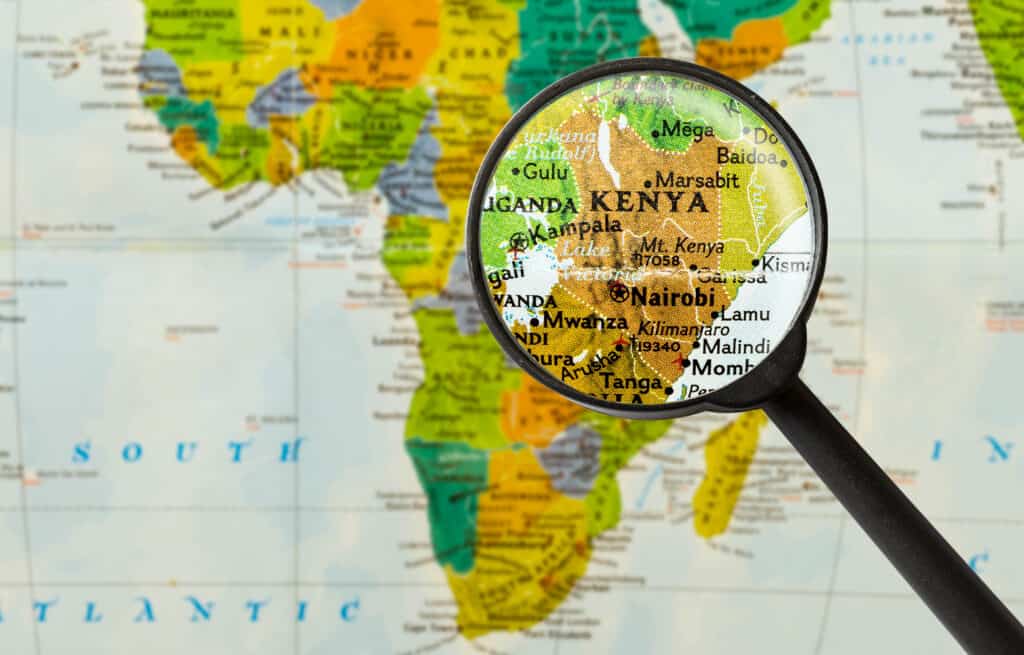
Map of Republic of Kenya through magnifying glass
©iStock.com/naruedom
What Exactly Is A Tree?
It sounds like a silly question, but what is a tree? Well, botanically a tree is a perennial plant with a long trunk, branches, and leaves.
The term “tree” is not a taxonomic group, but it refers to a variety of plants that have independently grown a trunk and branches.
So, now we know what a tree is, let’s discover 8 beautiful trees native to Kenya.
1. Vitex keniensis
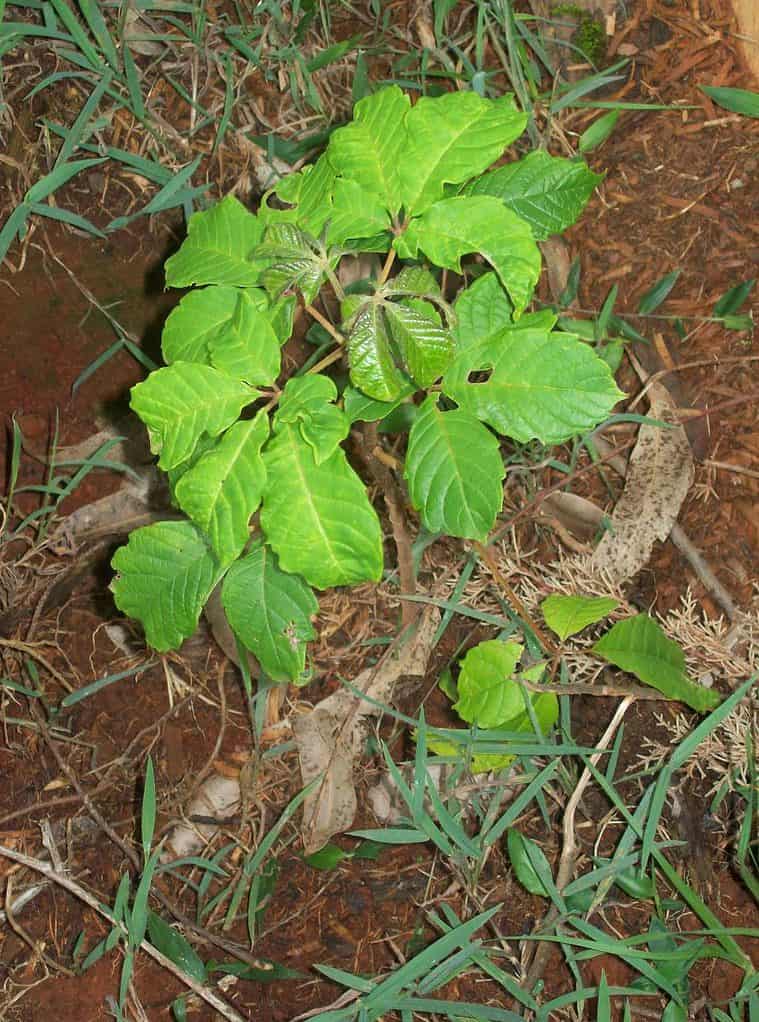
The Meru oak has attractive timber and it is very tough, much like the popular teak. As a result, it’s been overharvested for years and is now extremely rare.
©960 × 1,296 pixels, file size: 281 KB, MIME type: image/jpeg – License
This beautiful Kenyan native sits in the Lamiaceae family and is better known as the Meru oak.
It’s a deciduous tree that grows at elevations of 3000 to 6000 feet in montane forests, or rocky hills, and is one of the largest African trees at its full height of 114 feet. It has compound leaves with five pale green leaflets, and small white flowers with a single purple petal.
Unfortunately, the Meru oak has attractive timber and it is very tough, much like the popular teak. As a result, it’s been overharvested for years and is now extremely rare. It’s classified as endangered by the International Union for Conservation of Nature (IUCN).
2. Euphorbia cussonoides
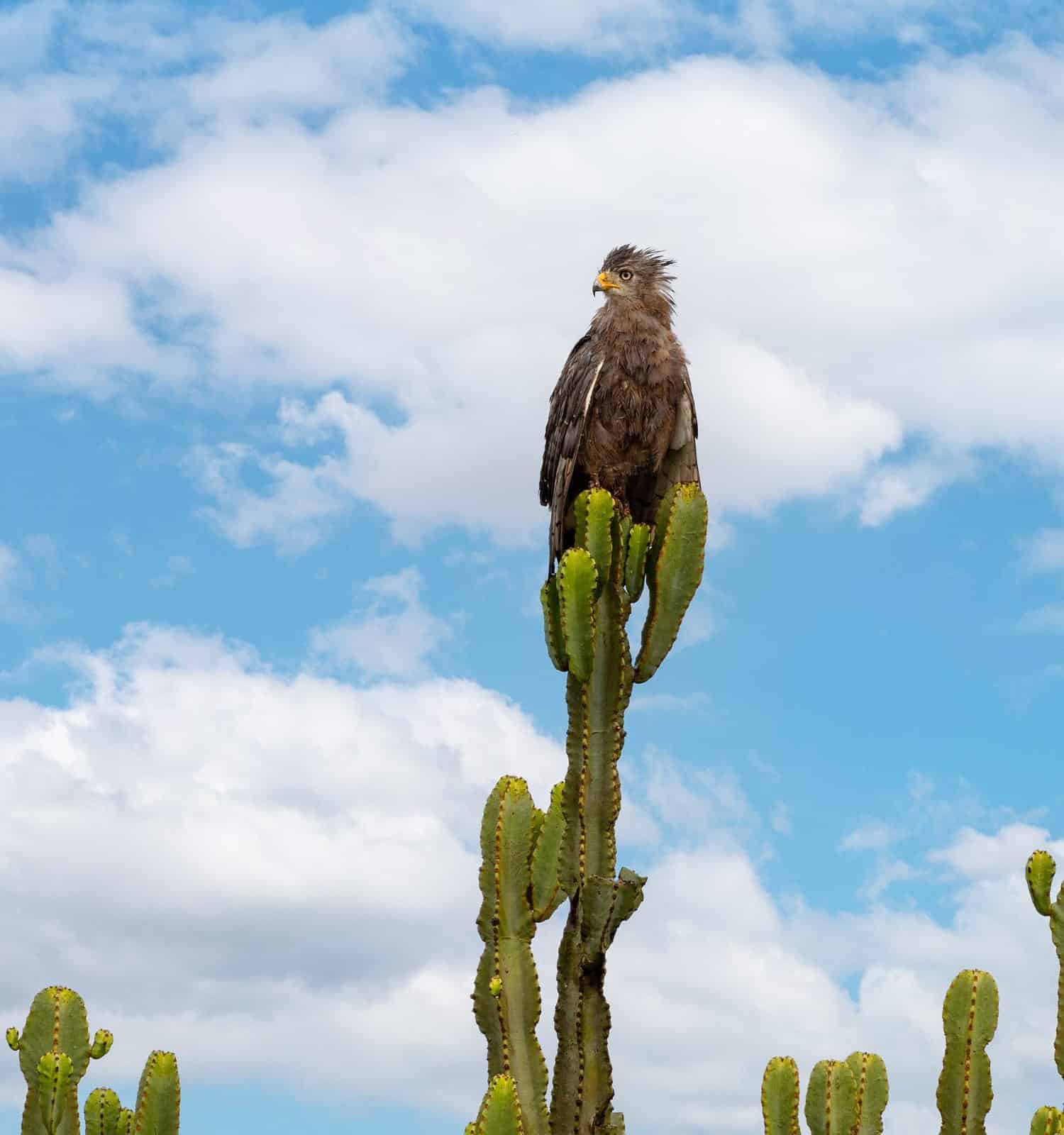
can reach 82 feet in height.
Image: Jane Rix, Shutterstock
©Jane Rix/Shutterstock.com
This beautiful tree is native to the upland forests of Kenya but its critically endangered due to forest clearance.
It’s a member of the Euphorbiaceae family and one of the tallest of the spurges. It has fleshy, succulent leaves and branches with soft white timber that leaks a toxic sap when it’s cut.
Euphorbia cussonides can reach 82 feet in height. It generally grows on steep rocky slopes or in dry evergreen forests with seasonally dry biomes.
This tree’s small yellow flowers are very unusual because they grow on the leaf margins.
3. Syzygium guineense
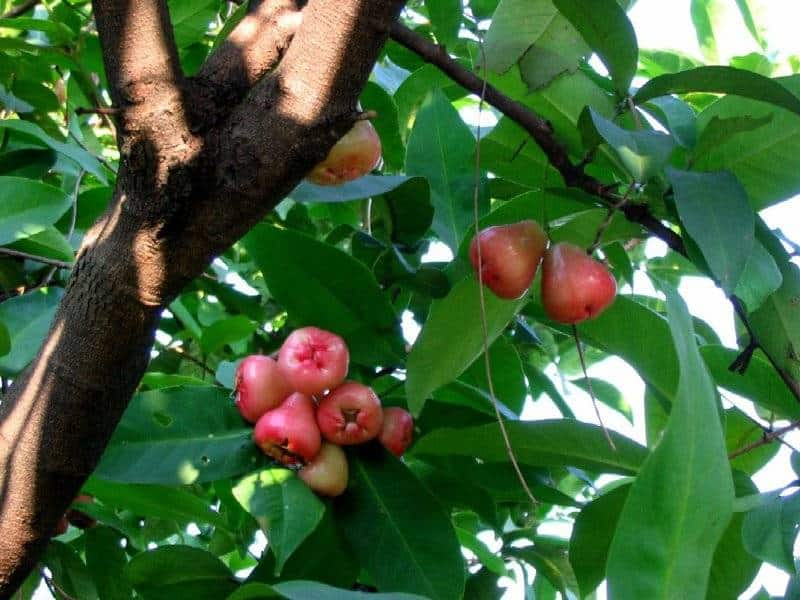
This must be one of the most useful and beautiful trees native to Kenya!
©800 × 600 pixels, file size: 81 KB, MIME type: image/jpeg – License
This tree is a member of the Myrtaceae family and native to Kenya plus other countries in eastern Africa.
It’s a beautiful tree with edible fruit and leaves, that’s also called the waterberry tree because it provides liquid when the fruit and leaves are sucked.
It’ll reach an approximate height of 50 feet on a fluted gray-brown trunk with a dense crown of purple-red leaves that mature to shiny green. A waterberry tree’s trunk becomes textured and rough as it ages.
In the warmer months, syzgium guineense’s white four-to-five inch flower stems bloom and emit a sweet honey fragrance that attracts pollinators.
This must be one of the most useful and beautiful trees native to Kenya!
4. Vachellia xanthophloea
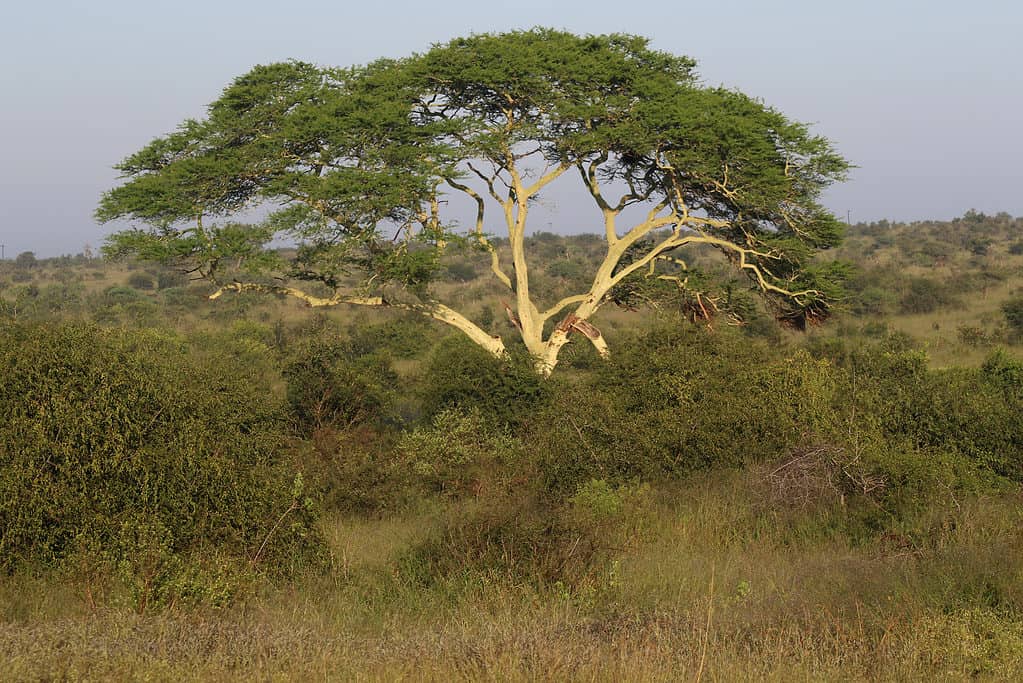
The fever tree gets the name from its habit of growing in bogs, on river sides, and in coastal areas where malaria is contracted (mosquitos lay their eggs in wet conditions).
©Kim Hume/Shutterstock.com
The vachellia xanthophloea is better known as the fever tree. It gets the name from its habit of growing in bogs, on river sides, and in coastal areas where malaria is contracted (mosquitos lay their eggs in wet conditions).
Fever trees reach 49 to 82 feet tall and have instantly recognizable powdery greenish-yellow bark with new purple twigs. It’s this color because photosynthesis takes place in its bark, rather than the leaves.
In warmer months, and after rainfall, scented cream flowers cluster in groups at its branch tips and attract pollinators.
This Kenyan native is beautiful, but its beauty is fleeting because it’s fast growing and short lived. However, it is immortalized in one of Rudyard Kipling’s Just So Stories called The Elephant Child.
5. Spathodea campanulate
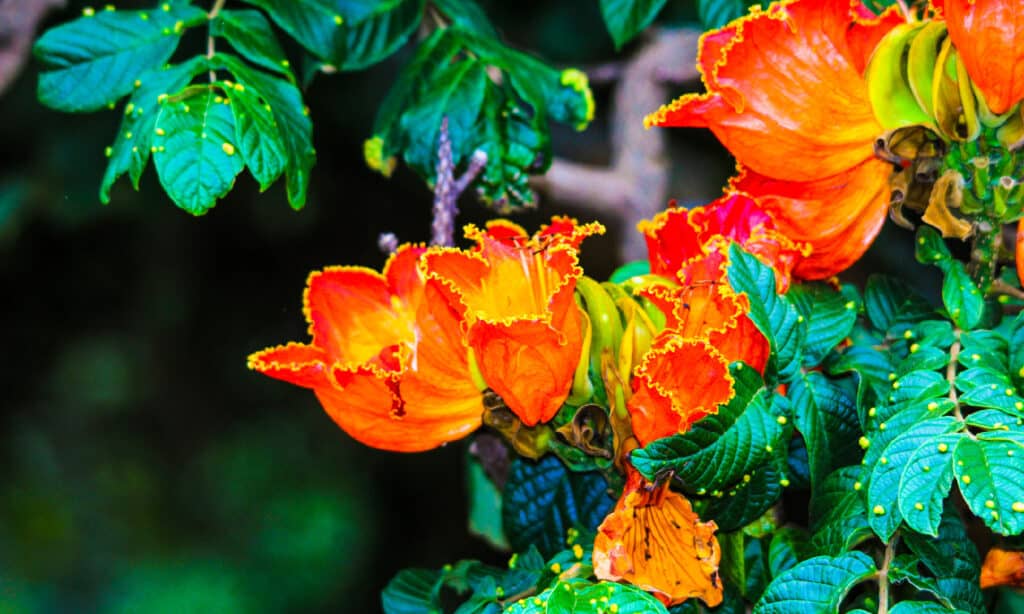
Although beautiful it’s nominated as one of the
100 world’s worst invasive species.
©iStock.com/Ansley Kynes
This beautiful tree is the well-known African tulip tree. It’s a single species in the Bignoniaceae genus and although beautiful it’s nominated as one of the 100 world’s worst invasive species.
Despite this dubious honor, the African tulip tree is a stunning plant. It reaches a maximum of 80 feet tall in its native tropical dry forest habitat, but tends to remain smaller (anything from seven feet) in cultivation. It’s so attractive that it’s grown in the majority of tropical countries including Australia and Sri Lanka.
It’s identifying feature is its large and showy orange flowers that reach up to 12 inches in length and hold water, which birds are quick to take advantage of. Hummingbirds also drink its nectar and because it’s bark is relatively soft, birds such as barbets drills holes to make nests.
However!
African tulip tree kill stingless bees, and as a result, the Australian government has listed them as a restricted invasive plant.
6. Vachellia tortilis
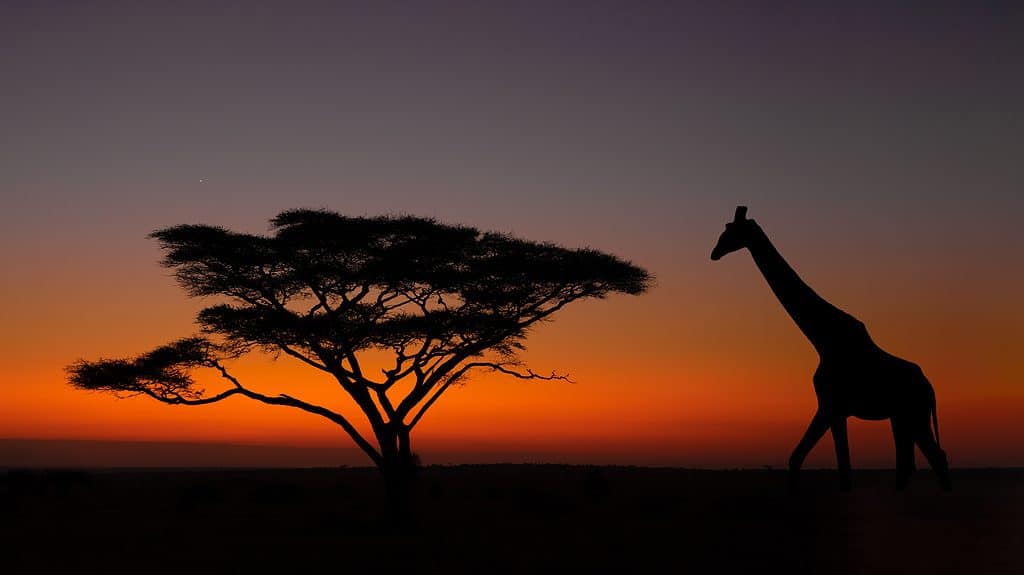
This flat-topped spiny tree has pinnate leaves with gray-green leaflets and creamy fragrant flowers in spring.
©Peter van Dam/Shutterstock.com
Vachellia tortilis is the umbrella thorn acacia tree. It’s a medium to large evergreen with a tall trunk and wide flat canopy that certainly keeps the rain off! It’s surely the most recognizable tree on the Africa savanna.
This flat-topped spiny tree has pinnate leaves with gray-green leaflets and creamy fragrant flowers in spring. It can survive over 100 degrees in the day plus cold night time temperatures with very little rainfall. In fact, the African savannah only receives 1.5 inches of annual rainfall, so this tree is very tough indeed. It’s trick is it 115 feet deep taproot.
7. Markhamia lutea
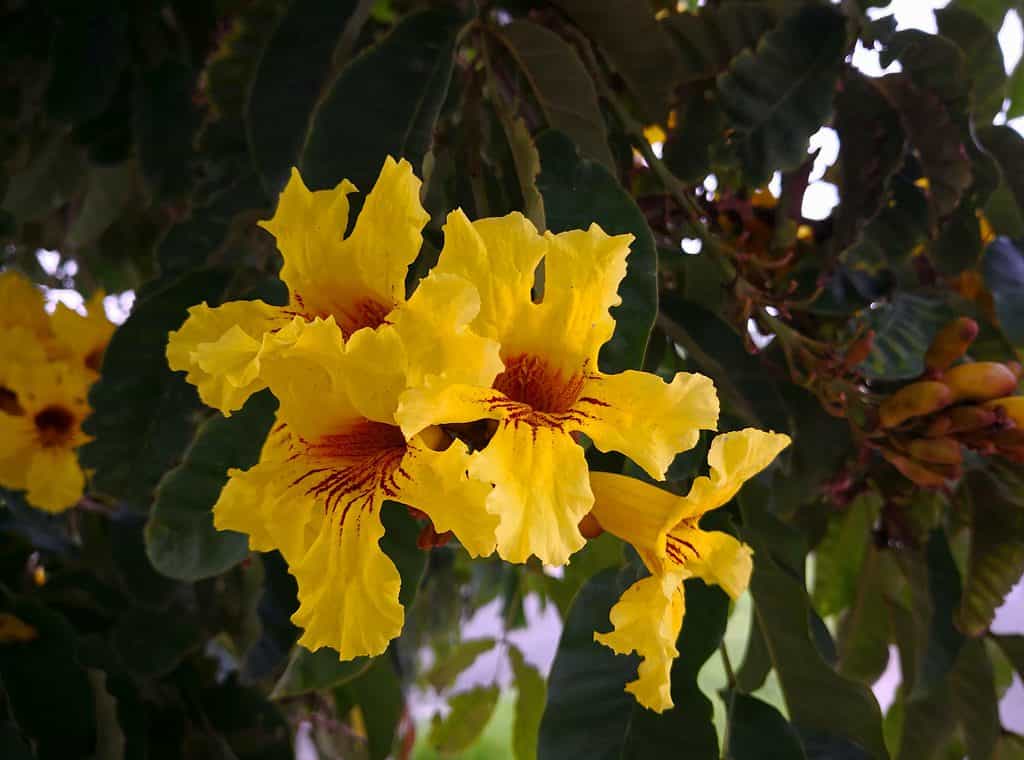
Markhamnia lutea is grown around the world as an ornamental tree, but only in tropical and sub tropical gardens because it’s sensitive to frost and prolonged cold temperatures.
©Burning Bright/Shutterstock.com
Markhamnia lutea is the Nile trumpet that’s admired for it’s large bright yellow flowers. It’s a relative of the African tulip tree and native to eastern African countries including Kenya.
The Nile trumpet is an evergreen tree that can reach around 16 feet tall. It’s used in agriculture as a shade tree for crops such as bananas and maize and for soil erosion control in re-foresting schemes.
In the wild it grows in savanna forests and montane forests and it was been used as traditional medicine to treat breathing difficulties.
Markhamnia lutea is grown around the world as an ornamental tree, but only in tropical and sub tropical gardens because it’s sensitive to frost and prolonged cold temperatures.
8. Kigelia africana
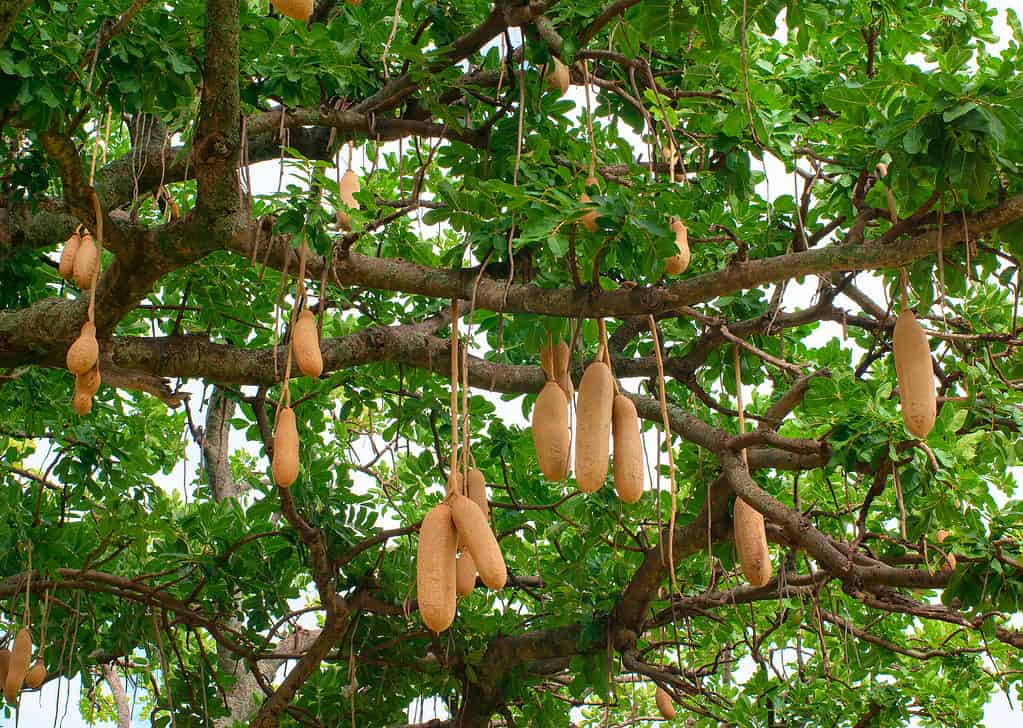
Despite its name the sausage tree is poisonous to humans, but the good news is other animals can eat it such as baboons, savanna elephants, hippos, giraffes, monkeys and parrots.
©Belikova Oksana/Shutterstock.com
Let’s end on one of the strangest trees native to Kenya – the sausage tree!
It’s not hard to see where this tropical African native gets it name. Its sausage like fruits reach two feet in length, weigh 15 pounds, and look exactly like a sausage.
But beware!
Despite its name the sausage tree is poisonous to humans, but the good news is other animals can eat it such as baboons, savanna elephants, hippos, giraffes, monkeys and parrots.
Once you get past the amazing fruits, there are other attractive aspects to admire. It reaches 66 feet tall and has wide spreading branches that are gray and smooth.
It’s evergreen all year round in areas that receive rainfall, but loses it’s leaves when water is scarce in order to preserve its moisture level. The adaptable leaves are long, thin, grow in groups of three, and reach 20 inches in length.
Bonus Beautiful Tree Native To Kenya!
Before we finish up on beautiful trees native to Kenya, there’s one more plant worth mentioning. It’s the Kenya tree coral.
Despite its name, the Kenya tree coral is not a tree gracing the savannas or mountains of Kenya, but a genus of coral in the capnella family.
These corals are native to the African coast and Indo-Pacific areas. They grow on reef slopes in clean water with tidal currents and eat algae. They are called Kenya tree corals because they grow a short gray trunk and resemble a mini underwater tree.
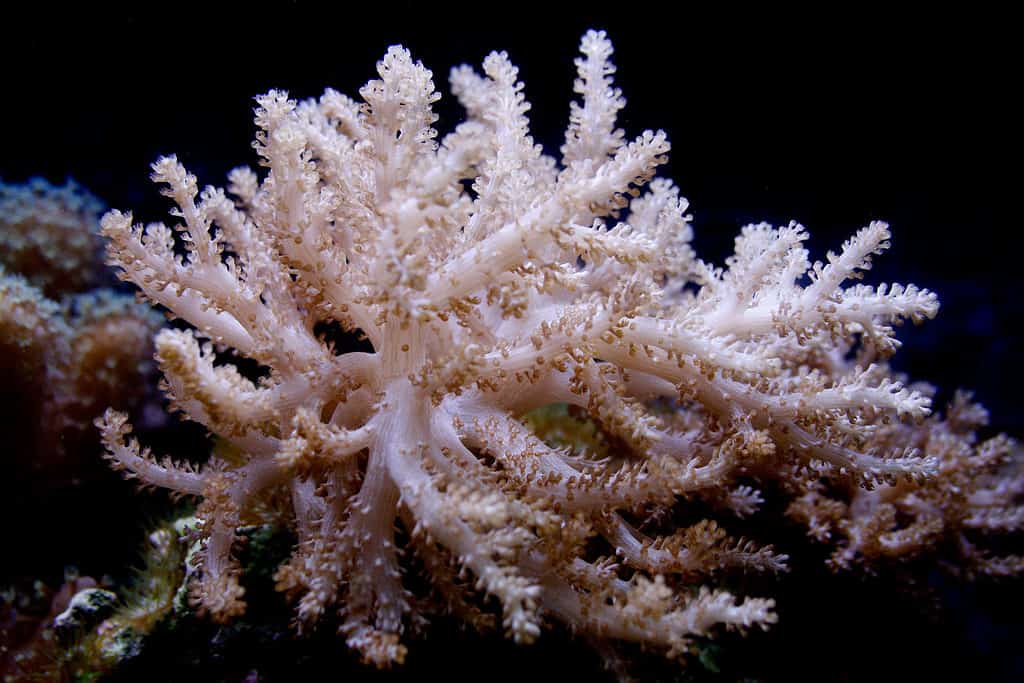
Despite its name, the Kenya tree
coral
is not a tree gracing the savannas or mountains of Kenya, but a genus of coral in the capnella family.
©Richelle Cloutier/Shutterstock.com
Up Next
The photo featured at the top of this post is © Kim Hume/Shutterstock.com
FAQs (Frequently Asked Questions)
Which tree is poisonous to humans?
Despite its name the sausage tree is poisonous to humans, but the good news is other animals can eat it such as baboons, savanna elephants, hippos, giraffes, monkeys and parrots.
Is the Kenya tree coral an actual tree?
Despite its name, the Kenya tree coral is not a tree gracing the savannas or mountains of Kenya, but a genus of coral in the capnella family.
Thank you for reading! Have some feedback for us? Contact the AZ Animals editorial team.






